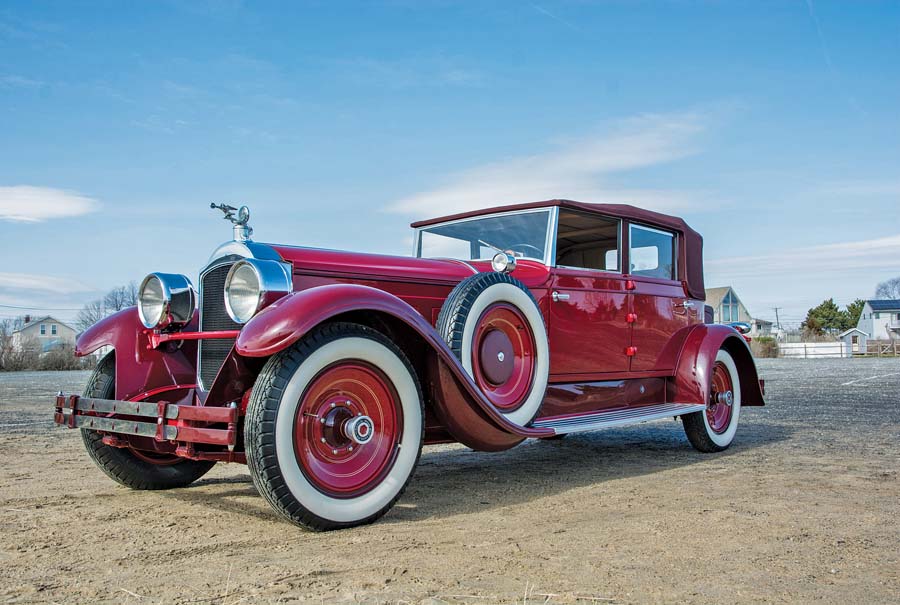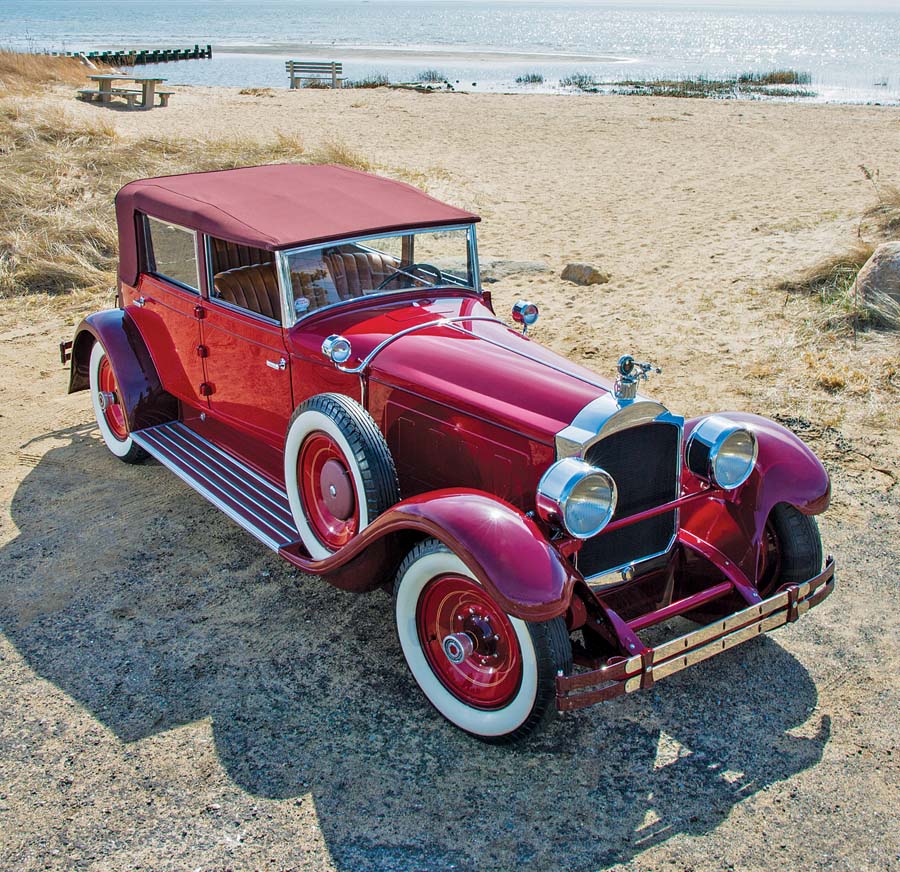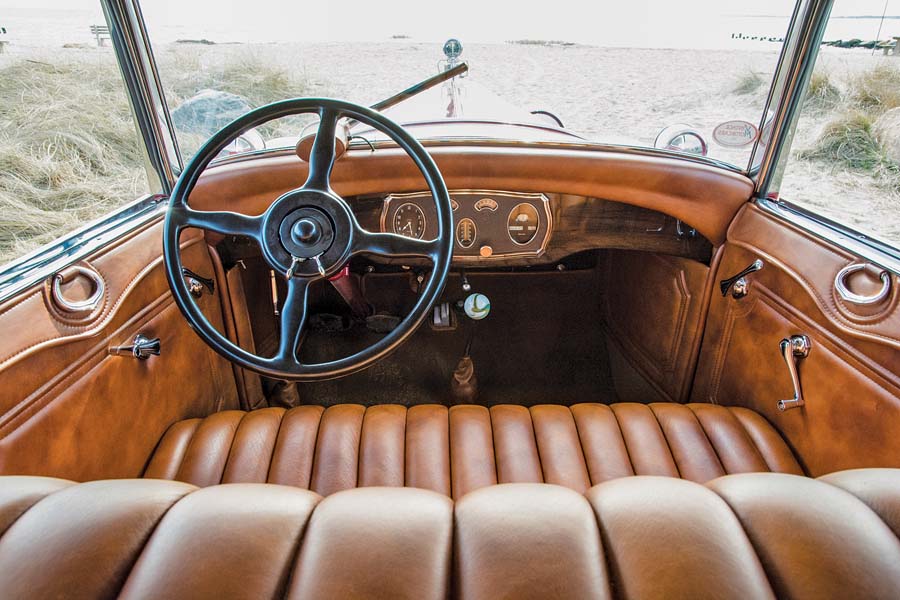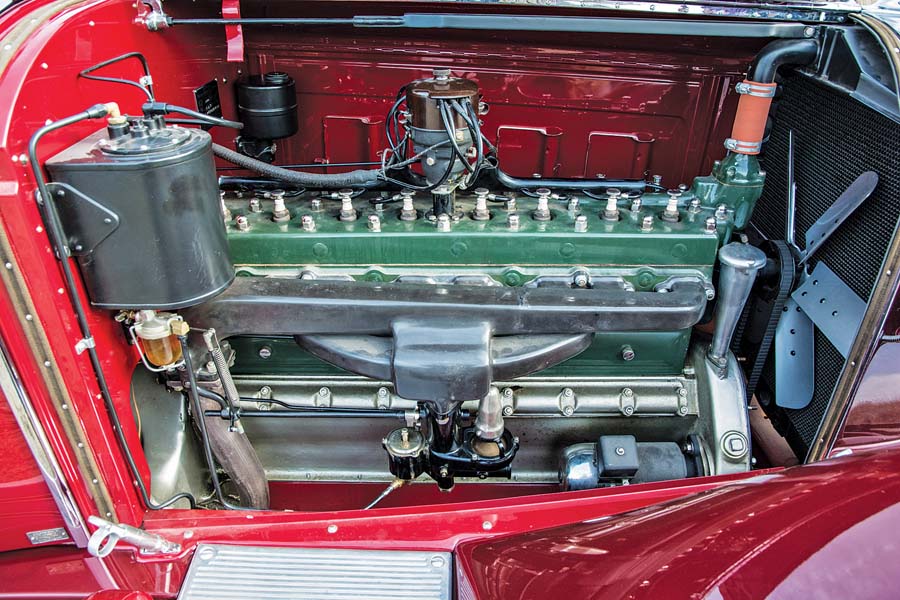SCM Analysis
Detailing
| Vehicle: | 1928 Packard Custom Eight Model 4-43 convertible sedan |
| Years Produced: | 1928 |
| Number Produced: | 10,568, but sources vary |
| Original List Price: | $3,975 to $5,150 |
| SCM Valuation: | $202,000 |
| Tune Up Cost: | $650 |
| Distributor Caps: | $450 |
| Chassis Number Location: | Plaque on firewall |
| Engine Number Location: | Boss on upper left corner of block |
| Club Info: | Classic Car Club of America |
| Website: | http://www.Classiccarclub.org |
| Alternatives: | 1928 Lincoln Model L Tourer, 1928 Cadillac 341A, 1929–32 Packard Deluxe Eight |
| Investment Grade: | C |
This car, Lot 141, sold for $126,500, including buyer’s premium, at Bonhams’ Greenwich, CT, auction on June 4, 2017.
The Roaring Twenties were a time of unprecedented economic growth, and the U.S. stock market was providing unparalleled wealth for many. The stock market increased 40% between May 1928 and September 1929, although there was little of substance to base the growth upon — as would soon become apparent.
The car of the era
During this era, Packard was the indisputable leader in the field of prestige automobiles. Packard built the most expensive American automobile, as the Custom Eight 433 was priced close to $5,000. As a comparison, a 1927 Ford Model A Roadster cost as little as $385.
If, however, you wanted to show that you were part of the elite, there was little doubt about what you would drive.
At the time Packard’s model designations did not relate to a model year — nor were they consistent between series.
The Packard Eights (433) and Sixes (526-533) were introduced in July 1927 and were considered 1928 models. They had a more massive look, with thicker, nickel-plated radiator shells, larger drum headlights and a lower stance.
All the brightwork was nickel plated, although cars were often later updated with chromium. The major mechanical innovation for 1928 was the introduction of the Bijur lubrication system that provided oil to the cylinders when the choke was being used. This reduced engine wear that happened when raw gas removed the oil on the cylinder wall.
The model designations were not the only Packard nomenclature that was a bit perplexing, as the Packard Custom series was not custom at all. It was not even a limited series but came directly from the production line. The “Deluxe” model simply indicated a side-mounted spare.
There were nine models in the Custom Eight line, and they were mounted on a 143-inch wheelbase and powered with a 383-ci straight eight that produced 109 horsepower.
In addition, Packard produced a custom catalog that presented 20 designs on the 4-43 chassis that could be ordered from five coachbuilding firms. The catalog also illustrated the nameplates of three additional firms, including Walter M. Murphy of Pasadena, CA.
The Murphy magic
Murphy opened their doors during August 1920, and their first assignment was a line of custom-bodied Lincolns that would appeal to the carriage trade.
Murphys were distinctive and broke precedent, attracting industry captains, distinguished entertainers and the landed gentry. They soon had branches throughout California.
Murphy designs were well suited to the California lifestyle, and they developed a method of folding the convertible top into a well behind the rear seat. This was the start of the “disappearing-top coupe.”
Murphy also developed the “Clear Vision” model, with thin aluminum forging for the middle pillar on convertible sedans, town cars and hard-top sport sedans.
These designs were quickly adapted to the Duesenberg chassis, and Murphy built more Duesenbergs than any other marque. Likewise, Duesenbergs carried Murphy bodies more than those from any other coachbuilder.
Murphy also built a series of their popular “Clear Vision” convertible sedans “in the white” for Packard’s Earle C. Anthony Company to market as semi-customs.
This was the only reference found of Murphy producing coachwork on a Packard. However, the firewall plate on our subject car, which appears to be new, indicates a delivery to McDonald Inc.
Found in a field
The early history of this Packard “Clear Vision” Convertible Sedan is unknown, although it was acquired 40 years ago when the seller found it in deteriorated condition in a Northeast field.
It recently received a comprehensive restoration at Vintage Motorcars, and it was finished in bold two-tone red livery.
Gooding & Co., at their 2010 Pebble Beach auction, sold a 1928 Packard 4-43 phaeton, which was finished in subtle shades of tan, for $148,500.
Our subject Packard should have realized a touch more at Bonhams’ Greenwich Auction, but two important factors were in play:
First, red does not work well on 1920s American Classics. More traditional tones of blue, tan or gray would have been more pleasing.
Second, the origin of the car was not clear. If it was one of the Earle C. Anthony Packards, the value would have been enhanced, but the documentation was lacking.
The new owner can, of course, change the paint — but at a cost that will be difficult to recoup. As such, the price paid can be considered reasonable — if multiple hues of red and burgundy are your colors of choice. ♦
(Introductory description courtesy of Bonhams.)



